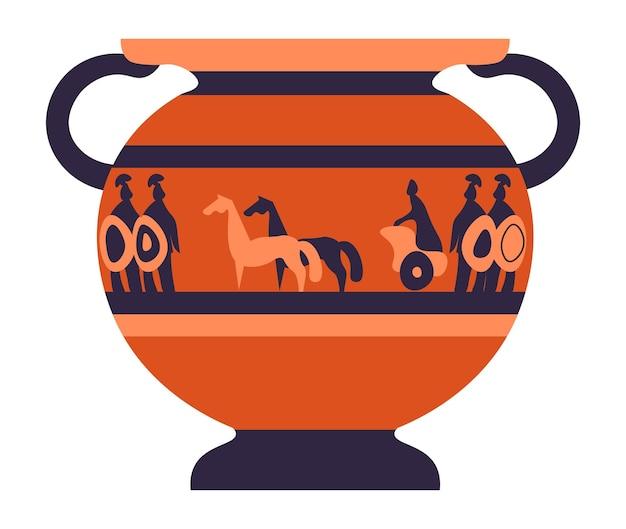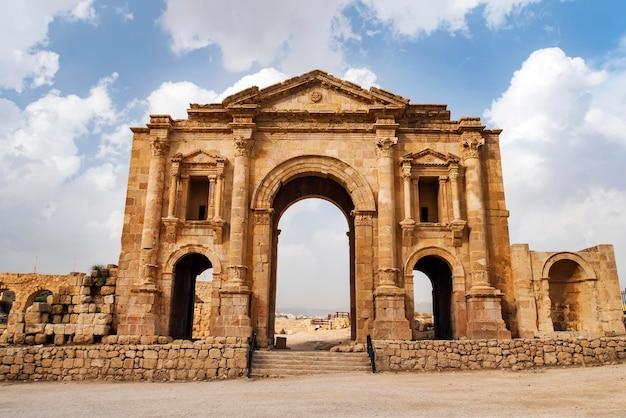Welcome to our blog post on the intriguing topic of Roman art and its main purpose. As we journey back in time to the ancient Roman Empire, we’ll explore the significance of this art form and unravel its captivating purposes. From the ornate sculptures to the elaborate paintings, Roman art reveals the rich cultural heritage and societal values of this powerful civilization.
Roman art encompasses a diverse range of artistic expressions, including sculpture, painting, architecture, and even intricate mosaics. These creations not only served aesthetic purposes but also had deeper meanings and functions within the Roman society. Join us as we delve into the fascinating world of Roman art, uncovering its main themes, influences, and lasting impact on the modern world.
What Was the Main Purpose of Roman Art
Roman art is renowned for its grandeur, attention to detail, and the lasting legacy it has left in the world of art and architecture. But what was the main purpose behind all of these magnificent creations? In this blog post, we’ll dive into the fascinating world of Roman art and uncover its primary objectives.
Reflections of Power and Prestige
Roman Art: A Status Symbol of Epic Proportions
One of the main purposes of Roman art was to reflect the power and prestige of the Roman Empire. From stunning sculptures to intricate mosaics, these artistic endeavors were meant to impress and demonstrate the strength and grandeur of the ruling elite. By commissioning elaborate artworks, Roman Emperors showcased their wealth and authority, solidifying their social position in the eyes of their subjects.
Honoring the Gods and Goddesses
Roman Art: A Spiritual Connection
Roman art was also used as a means of honoring the gods and goddesses of the ancient Roman pantheon. Elaborate temples, such as the Pantheon in Rome, were constructed as architectural marvels, serving as monumental tributes to the deities. Intricately crafted statues, frescoes, and reliefs adorned these sacred spaces, allowing worshippers to feel a spiritual connection with their gods.
Propaganda and Commemoration
Roman Art: Spreading Influence and Remembering Legends
Roman art was often used as a form of propaganda, promoting political ideologies and commemorating military victories. Triumphal arches, like the Arch of Titus, celebrated successful military campaigns and showcased the might of the Empire. Sculptures of emperors and prominent figures served to immortalize their deeds, solidifying their place in history and ensuring their legacies lived on for generations to come.
Preserving History and Culture
Roman Art: A Time Capsule of the Past
Another important purpose of Roman art was to preserve history and cultural traditions. From intricate mosaics depicting scenes from daily life to frescoes showcasing mythological tales, these artistic creations provided valuable insights into the customs, beliefs, and activities of the ancient Romans. Through their art, the Romans documented their way of life, ensuring that future generations would have a window into their rich and diverse culture.
Roman art served a variety of purposes, from displaying the might of the empire to honoring the gods and commemorating important events. It was a tool for propagating political ideologies, preserving history, and showcasing the grandeur of the ruling elite. As we admire the masterpieces left behind by the Romans, we can appreciate the multifaceted nature of their art and the enduring legacy it continues to leave in the world of art and culture.
FAQ: What Was The Main Purpose Of Roman Art
What is Roman art
Roman art refers to the artistic and architectural styles developed in the ancient city of Rome and the Roman Empire. It encompasses various art forms such as sculpture, painting, architecture, and decorative arts.
What are the main purposes of painting during Stone Age
During the Stone Age, painting served multiple purposes, including storytelling, communication, and religious or ceremonial rituals. It was often used to depict hunting scenes, daily life, and important events within the community.
What is the purpose of Greek and Roman art
Greek and Roman art served both practical and aesthetic purposes. It aimed to celebrate and immortalize important individuals, portray historical and mythological events, and beautify public spaces and private residences.
What period is Roman art
Roman art spanned from approximately 500 BCE to 500 CE, covering a wide range of artistic styles across different periods, including the Republic, the Early Empire, and the Late Empire.
What are the main characteristics of Roman art
Roman art is known for its emphasis on realism and the incorporation of Greek influences. It often featured lifelike portraits, grand architectural structures, intricate mosaics, and intricate details in sculpture.
What did Greek art symbolize for the Romans
For the Romans, Greek art symbolized refinement, sophistication, and cultural superiority. They admired and emulated Greek artistic styles as a way to display their elevated taste and status.
How does Roman art influence us today
Roman art has had a lasting impact on Western art and architecture. Many contemporary buildings draw inspiration from Roman architectural styles, and Roman sculpture techniques continue to inspire artists worldwide.
What makes Roman art and architecture effective
The effectiveness of Roman art and architecture can be attributed to its grandeur, attention to detail, and ability to evoke a sense of power and authority. The use of symmetry, balance, and harmonious proportions also contributes to its visual appeal.
How did the purposes of sculpture and painting differ in Roman art
In Roman art, sculpture primarily served as a means of commemoration and portraiture. It was often used to immortalize significant individuals, such as emperors and military leaders. Painting, on the other hand, adorned walls and ceilings, depicting various scenes and narratives.
What is the main purpose of Roman sculpture
The main purpose of Roman sculpture was to capture the likeness and idealized image of important individuals, such as emperors, gods, and heroes. It also aimed to convey power, authority, and the achievements of the subjects.
Which is the main reason why the Romans built arena and Colosseum
The Romans built arenas and the iconic Colosseum primarily for the purpose of entertainment, hosting gladiatorial contests, animal hunts, mock battles, and other spectacles that pleased the populace and showcased the might and wealth of the empire.
What are the 3 periods of Roman art
Roman art is often categorized into three major periods: the Republican period (509–27 BCE), the Imperial period (27 BCE–284 CE), and the Late Antique period (284–500 CE).
What was the purpose of art in ancient Greece
In ancient Greece, art served various purposes, including religious worship, honoring gods and heroes, storytelling, decoration, and political propaganda. It was also valued for its aesthetic qualities and celebrated the human form.
Why was art and architecture important to Rome
Art and architecture played a crucial role in Rome by serving as symbols of power, wealth, and cultural refinement. They acted as a form of propaganda, promoting imperial ideals and reinforcing Rome’s status as the center of an empire.
What was the purpose of Roman architecture
Roman architecture had multiple purposes, including accommodating the functional needs of buildings, creating awe-inspiring public spaces, and showcasing the grandeur and authority of the Roman Empire. It also aimed to provide comfort, convenience, and efficient infrastructure.
Why is the city Pompeii important to the study of Roman art
The city of Pompeii provides an exceptional archaeological snapshot of Roman art and daily life. Preserved by the eruption of Mount Vesuvius in 79 CE, the ruins of Pompeii offer valuable insights into Roman art, architecture, and societal customs.
What were some of the reasons the Romans created art and architecture
Romans created art and architecture for several reasons, including religious devotion, political propaganda, commemoration of important individuals, decoration, and public entertainment. They also aimed to demonstrate cultural sophistication and assert their dominance over conquered territories.
What influenced Roman art
Roman art was heavily influenced by Greek art, particularly during the Republican period. However, over time, it incorporated elements from other cultures, such as Egyptian, Etruscan, and Eastern influences. Roman art also developed its distinct style, emphasizing realism and practicality.
What are the greatest contributions of Roman arts to the modern world
Roman art has made significant contributions to the modern world. Its architectural principles, such as arches, vaults, and domes, continue to inspire contemporary architecture. Roman sculpture techniques and attention to detail have influenced artists throughout history.
What knowledge did Romans contribute to art history
The Romans contributed to art history by expanding on Greek artistic traditions, developing new architectural techniques, and advancing the realism and portraiture in sculpture. They also left behind extensive artistic documentation, allowing for a better understanding of ancient art and history.
What is the influence and contribution of Roman art
The influence of Roman art can be seen in various aspects of modern society, including architecture, sculpture, painting, and decorative arts. Roman art introduced techniques, styles, and aesthetics that continue to shape the artistic landscape today.
What purpose did Romans want their sculptures and paintings to serve
Romans wanted their sculptures and paintings to serve diverse purposes, including showcasing power and prestige, immortalizing important individuals, propagating political messages, depicting narratives and mythology, and beautifying both public and private spaces. These works of art were a means of expressing Roman identity and ideals.
Follow us on Twitter for more fascinating insights into the world of art!

